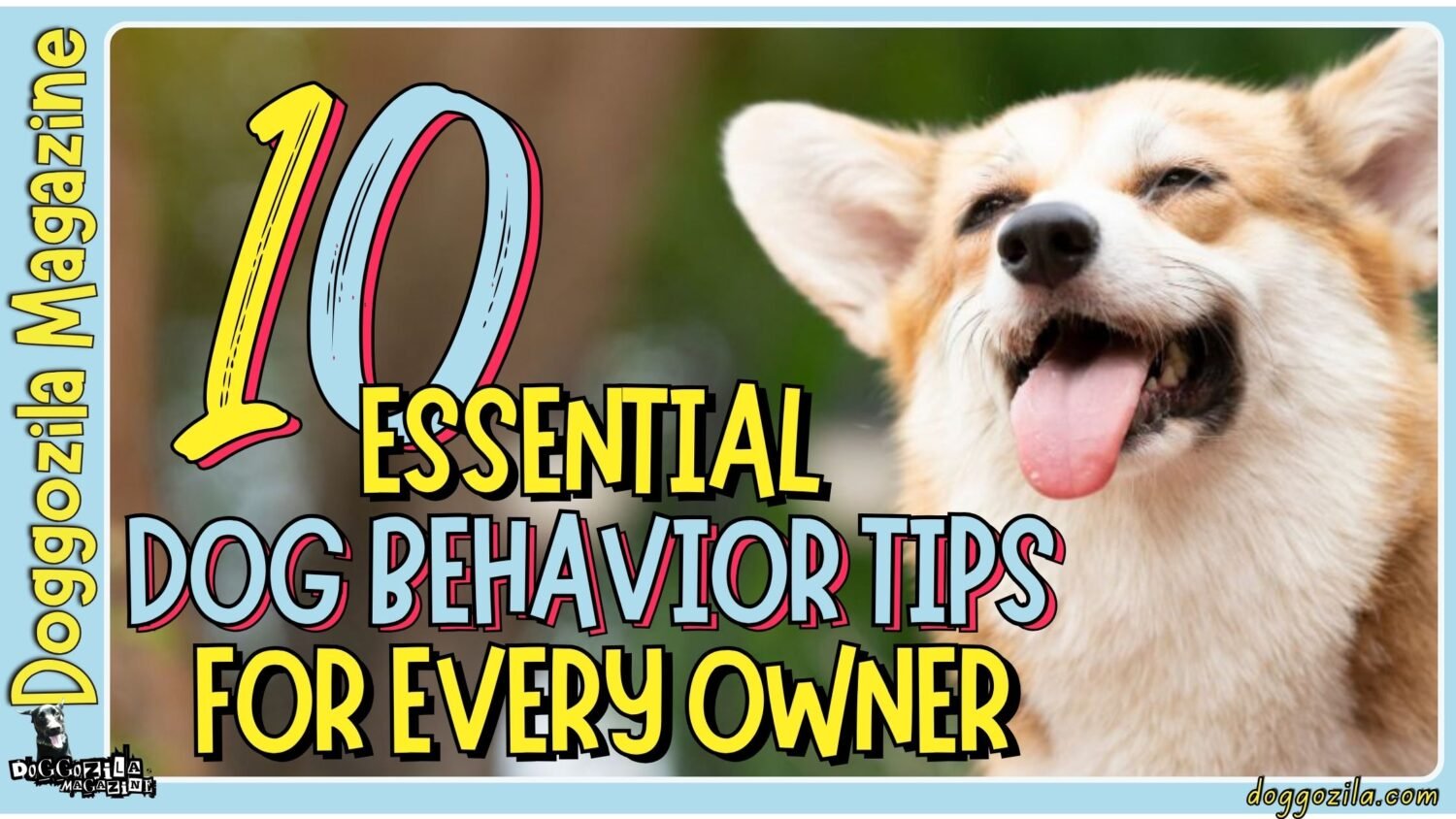Before you set off on your epic adventure, planning is key to ensuring a stress-free trip for both you and your dog. But let’s be real—figuring out how to travel with a dog requires some extra planning to keep them safe, happy, and comfortable. Research pet-friendly destinations thoroughly, considering factors like climate, local pet policies, and available activities.
Check vaccination requirements well in advance—some locations may need rabies certifications or additional preventative treatments. Map out rest stops if you’re driving, ensuring there are safe places for bathroom breaks and exercise.
Airlines, hotels, and even national parks have different pet policies, so always verify in advance to avoid surprises. A well-thought-out itinerary that accounts for your dog’s needs will make the journey smoother and more enjoyable for everyone involved.
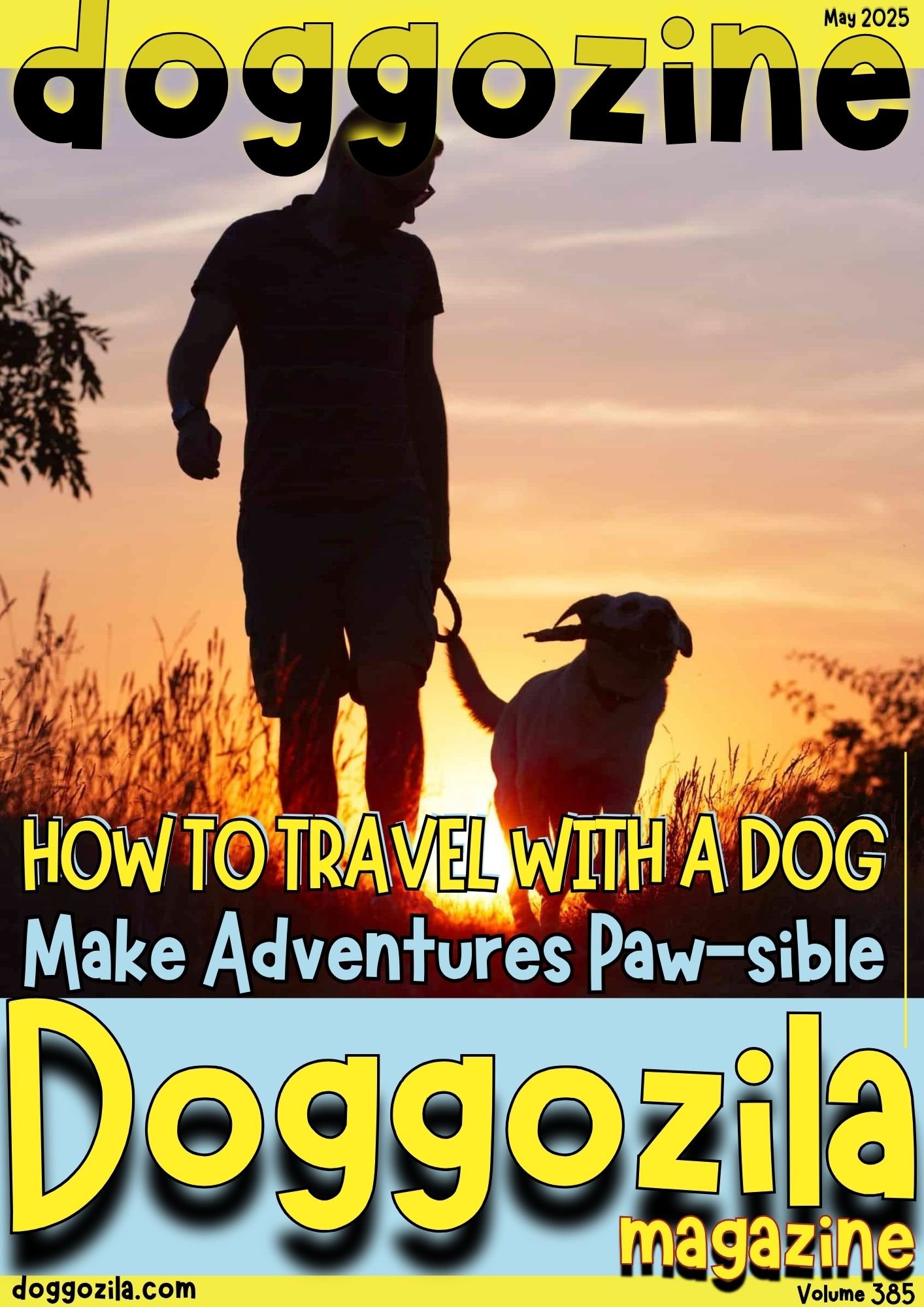
CHOOSING THE RIGHT DESTINATION FOR YOU AND YOUR PUP: FACTORS TO CONSIDER
Not all travel spots are dog-friendly, so picking the right destination is crucial for a fun and hassle-free trip. Coastal towns with dog beaches, national parks with pet-friendly trails, and cities with outdoor dining options are excellent choices.
For example, Carmel-by-the-Sea in California is famous for its dog-friendly culture, while Asheville, North Carolina, offers plenty of scenic hikes. Avoid places with extreme temperatures, as heatwaves or freezing conditions can be dangerous for pets. Research local leash laws, off-leash areas, and pet fees at attractions to ensure a smooth experience. A destination that welcomes dogs with open arms will make your adventure much more enjoyable.
How Airline and Road Trip Regulations Works: What You Need to Know Before You Travel with a Dog
If you’re flying, each airline has its own rules on how to travel with a dog—some allow small dogs in-cabin, while others require them in the cargo hold. Airlines like Delta and Southwest have clear pet policies, but always call ahead to confirm availability and restrictions.
For road trips, secure a crash-tested harness or travel crate to keep your pup safe in case of sudden stops. Some states require health certificates for crossing borders, so check local laws before traveling. Being prepared with the right documentation and safety gear prevents unnecessary stress during transit and keeps your dog protected.
How to Pack The Perfect Dog Travel Kit: Essentials for A Stress-Free Journey
A well-packed travel kit makes all the difference when figuring out how to travel with a dog comfortably and safely. Bring essentials like food, water, collapsible bowls, waste bags, and a pet first-aid kit with bandages and antiseptic wipes. Don’t forget comfort items like their favorite blanket or toy to ease anxiety in unfamiliar environments.
If your dog takes medication, pack extra doses in case of delays or unexpected extensions to your trip. A portable water bottle with a built-in bowl is a game-changer for hikes and pit stops, ensuring hydration on the go. Preparation ensures your dog stays happy, healthy, and content throughout the journey.
🔑 Key Points: Opt for dog-friendly beaches, hiking trails, or cities with outdoor activities. Avoid extreme climates or locations with strict pet restrictions.
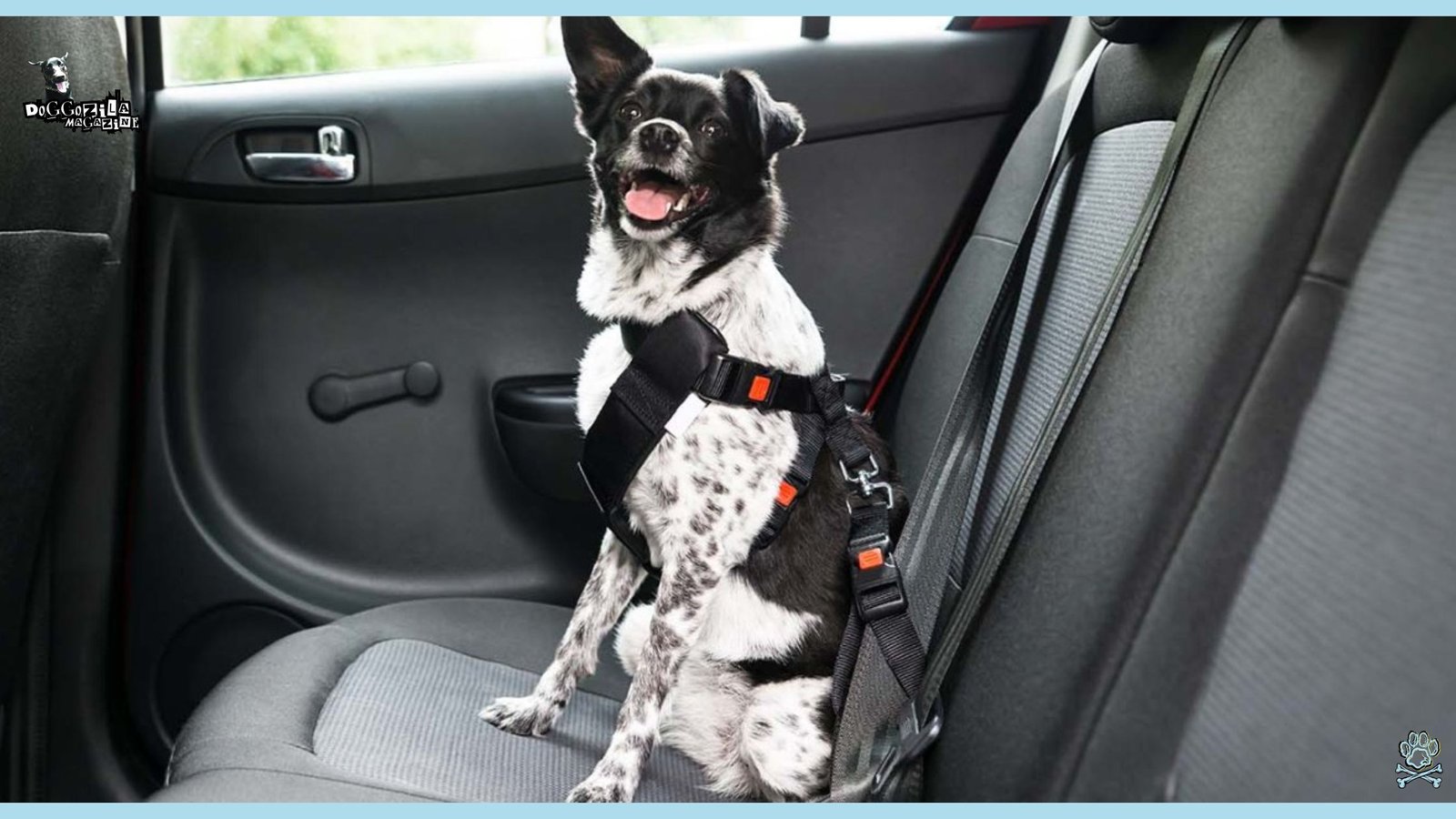
HOW TO TRAVEL WITH A DOG BY CAR: ROAD TRIP ESSENTIALS FOR A SMOOTH RIDE
Road trips are one of the best ways to explore new places with your dog, offering flexibility and fun pit stops along the way. However, long hours in the car can be challenging if your pup isn’t used to it, so gradual training is key. Start with short drives to help them adjust, and always secure them safely in the vehicle using a harness or crate. Plan frequent breaks for bathroom needs, exercise, and hydration to keep them comfortable and relaxed. Here’s how to travel with a dog on a road trip like a pro, ensuring safety and enjoyment for both of you.
How to Prepare Your Dog for Long Drives: Tips to Make Car Travel Enjoyable
Not all dogs love car rides, so gradual training is essential to help them feel at ease on the road. Begin with short trips to fun locations like a park or a friend’s house to create positive associations. If your dog gets anxious, calming treats, pheromone sprays, or soothing music can help reduce stress.
Never let your dog stick their head out the window—debris and wind can harm their eyes, ears, and respiratory system. Practice commands like “settle” or “stay” to keep them calm during the ride, rewarding good behavior with treats. With patience and consistency, your dog will learn to enjoy the journey as much as the destination.
Keeping Your Dog Safe and Comfortable in The Car: Must-Have Gear When Travel
Safety should always come first when learning how to travel with a dog by car, as accidents can happen unexpectedly. Use a crash-tested harness, travel crate, or pet barrier to prevent distractions and injuries while driving. Ensure proper ventilation in the car, and never leave your dog alone in a parked vehicle—temperatures can rise dangerously fast, even on mild days.
Bring a cozy bed or mat to make the space inviting, along with familiar toys to keep them entertained. If your dog gets car sick, consult your vet for motion sickness remedies or natural solutions like ginger treats. A safe and comfortable ride ensures a happier, stress-free trip for everyone.
Fun Pit Stops and Exercise Breaks: Keeping Your Dog Active on the Road
One of the best parts of road-tripping with your dog is discovering fun stops along the way where they can stretch their legs. Look for dog parks, scenic trails, or pet-friendly rest areas that allow for safe off-leash play if permitted. Apps like BringFido can help locate nearby dog-friendly spots, including cafes with outdoor seating and hiking trails.
Always keep your dog leashed in unfamiliar areas to prevent accidents or encounters with wildlife. A tired dog is a well-behaved traveler, so plan for plenty of playtime and exploration during breaks. These stops not only break up the drive but also make the journey just as exciting as the destination.
🔑 Key Points: Keep Your Dog Comfortable During Travel. Take frequent breaks on road trips for exercise and bathroom needs. For anxious dogs, use calming aids (pheromone sprays, vet-approved supplements) and maintain familiar routines.
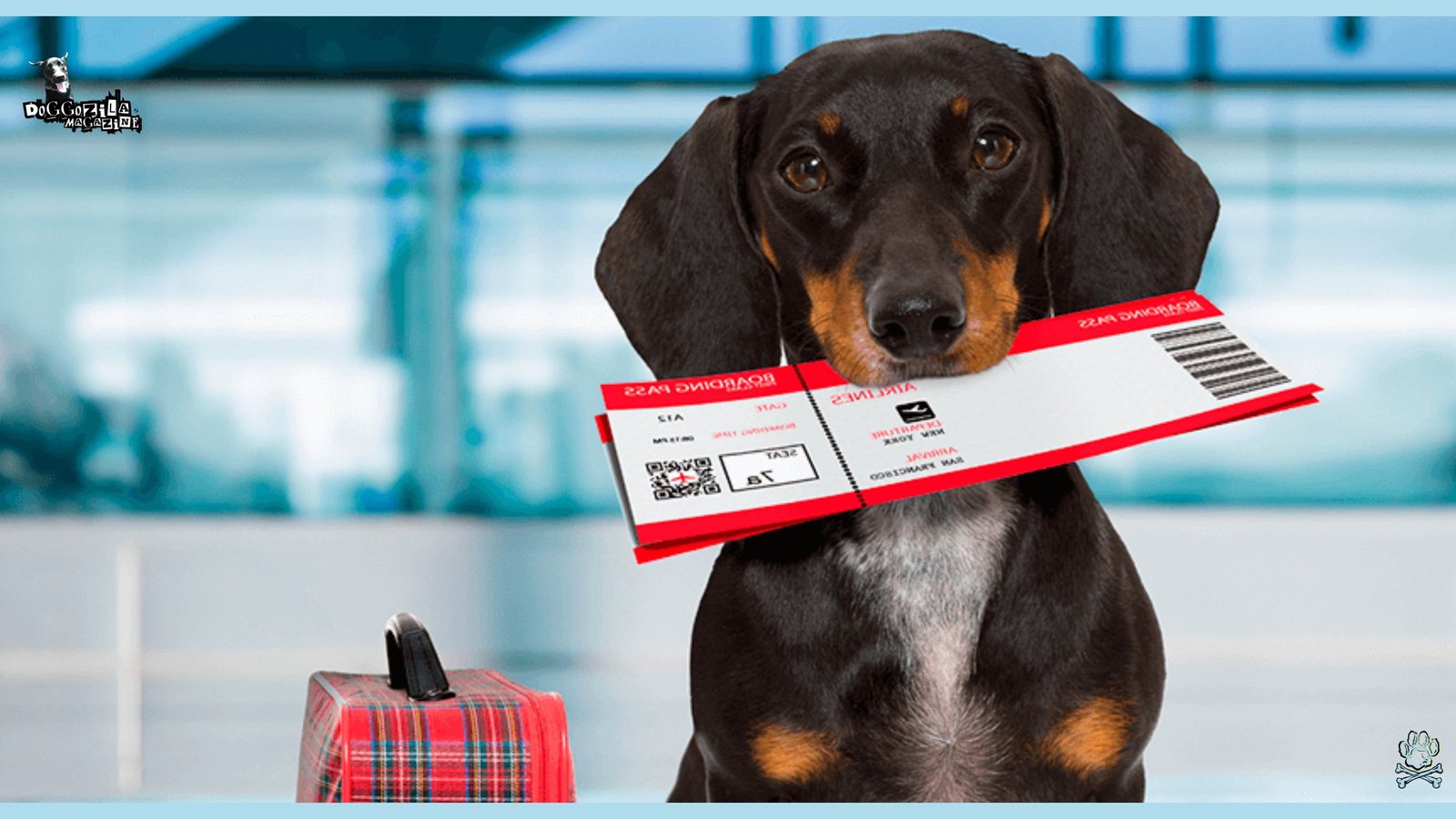
FLYING WITH YOUR DOG: HOW TO TRAVEL WITH A DOG BY AIR SAFELY AND COMFORTABLY
Air travel with a dog requires extra preparation to ensure their safety and comfort throughout the journey, from check-in to landing. Different airlines have varying pet policies, so always check restrictions before booking your tickets, as some breeds may face additional regulations. Here’s how to travel with a dog by air smoothly, covering everything from airline selection to post-flight care.
Small dogs may ride in-cabin if they meet size and weight requirements, while larger breeds might need to travel in the climate-controlled cargo hold. Acclimating your dog to their carrier beforehand reduces stress, so practice short sessions at home before the trip.
Choosing The Right Airline and Cabin Options: What to Look for Before Booking
Not all airlines are equally pet-friendly, so thorough research is crucial to finding the best option for your furry companion. Airlines like JetBlue and Alaska Airlines are known for their accommodating pet policies, while others may have strict breed restrictions or seasonal embargoes.
If your dog is small enough, an in-cabin carrier is the safest and least stressful option, but ensure it meets the airline’s size guidelines. For larger dogs, confirm that the airline has a pressurized, temperature-controlled cargo area to prevent health risks during transit. Booking a direct flight minimizes layovers and reduces the chances of delays or mishandling, ensuring a smoother experience for your pup.
Preparing Your Dog for The Flight Experience: Tips to Reduce Anxiety
Flying can be stressful for dogs, especially if it’s their first time, so gradual preparation is key to a successful trip. Get them used to their carrier weeks before departure by letting them nap in it at home and associating it with positive experiences like treats and toys.
Familiar scents, like a worn t-shirt or a blanket from home, can provide comfort during the flight and help ease separation anxiety. Avoid feeding your dog a large meal right before the trip to prevent nausea, but ensure they stay hydrated with small sips of water.
If your dog is highly anxious, consult your vet about calming aids like Adaptil sprays or vet-approved sedatives (though these are generally discouraged for air travel). A well-prepared dog will handle the flight like a seasoned traveler, making the journey easier for both of you.
Navigating Airport Security and Procedures: A Step-By-Step Guide
Airport security can be overwhelming for pets, but knowing what to expect helps streamline the process and keep stress levels low. Dogs must be removed from their carriers during TSA screening, so practice getting in and out calmly at home to avoid struggles at the checkpoint.
Keep their leash and harness secure to prevent escapes in busy terminals, and consider a slip lead for added control if needed. Arrive early to allow time for bathroom breaks before boarding, as some airports have pet relief areas post-security.
Always have your dog’s ID tags, vaccination records, and health documents easily accessible in case of questions from airline staff or security. Smooth airport navigation ensures a stress-free start to your adventure and keeps your pup safe throughout the journey.
🔑 Key Points: Safety Comes First—Always Secure Your Dog. Use crash-tested harnesses or travel crates for car rides. For flights, choose pet-friendly airlines and acclimate your dog to their carrier beforehand.
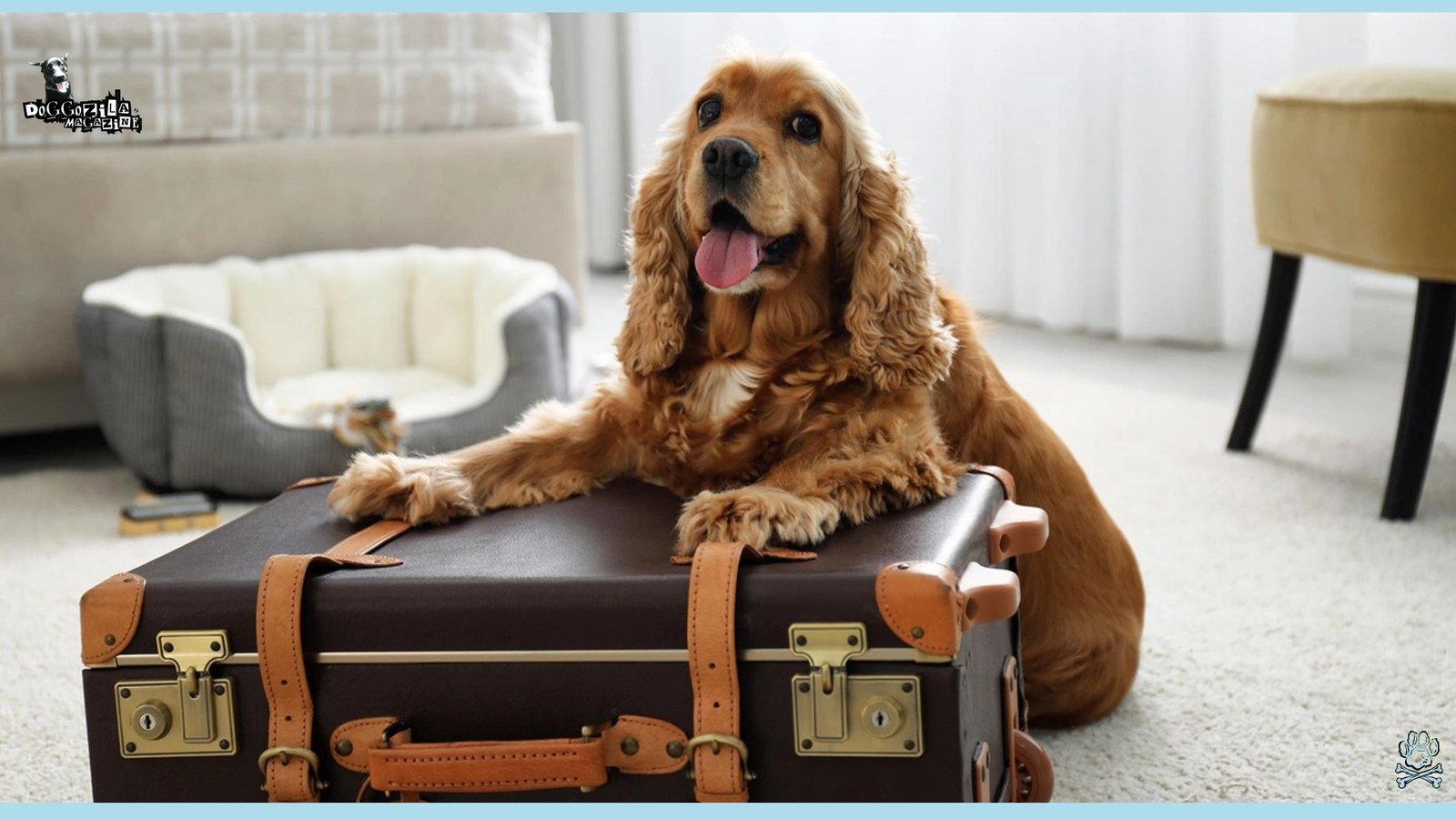
HOW TO TRAVEL WITH A DOG: FINDING PET-FRIENDLY ACCOMMODATIONS THAT WELCOME YOUR PUP
Not all hotels, Airbnbs, or campgrounds welcome pets, so booking the right lodging is crucial for a comfortable and hassle-free trip. Many chains like La Quinta and Kimpton are famously pet-friendly, but always confirm policies before reserving, as some locations may have size or breed restrictions. Here’s how to travel with a dog and ensure you both have a cozy, welcoming place to rest after a day of adventures.
Look for places with dog parks, walking trails, or nearby green spaces for easy exercise and bathroom breaks during your stay. Some rentals charge extra pet fees or deposits, so factor those into your budget to avoid surprises at check-in.
Researching Hotels, Vacation Rentals, And Campgrounds: Where to Stay with Your Dog
Websites like BringFido and Airbnb’s pet-friendly filter make it easy to find accommodations that welcome dogs, but digging deeper ensures the best fit. Read reviews from other pet owners to see if the place truly caters to dogs, checking for mentions of clean grounds, nearby walks, or even pet amenities.
Campgrounds often allow dogs but may have leash rules or restricted areas, so verify policies before pitching your tent. Luxury resorts sometimes offer pet spas, gourmet dog menus, or even “paw-turne” services—perfect for pampered pups!
Always call ahead to confirm weight limits, breed restrictions, or additional fees to avoid last-minute disappointments. A little extra research guarantees a comfortable stay for both you and your four-legged companion.
Preparing Your Dog for A New Environment: Helping Them Settle in Quickly
Dogs can feel uneasy in unfamiliar places, so taking steps to help them adjust ensures a smoother transition and a happier trip. Bring their bed or a favorite blanket to provide a familiar scent in the new space, which can ease anxiety and promote relaxation.
Set up a designated area with their toys, water bowl, and crate to create a safe zone where they can retreat if overwhelmed. If your dog is prone to stress, a portable white noise machine can mask unfamiliar sounds like hotel elevators or street noise.
Reward calm behavior with treats and praise to reinforce positive associations with the new environment. A relaxed dog means a more enjoyable trip for both of you, so patience and routine are key during the first few hours in a new place.
Etiquette For Staying in Pet-Friendly Lodging: Being A Responsible Pet Owner
Being a courteous guest ensures that pet-friendly accommodations remain open to future travelers and their furry friends. Keep your dog leashed in common areas unless explicitly allowed off-leash, and always clean up after them immediately to maintain cleanliness.
Avoid leaving your dog alone in the room if they bark, chew, or have separation anxiety—some hotels charge fines for disturbances or property damage. Tip housekeeping extra if your dog sheds a lot, as it shows appreciation for the additional cleaning required. A little courtesy and respect for the property go a long way in keeping doors open for four-legged guests everywhere you travel.
🔑 Key Points: Plan Ahead for a Stress-Free Trip.Research pet-friendly destinations, accommodations, and transportation rules (airlines, road trip regulations). Pack essentials like food, water, medications, and comfort items to keep your dog happy on the go.
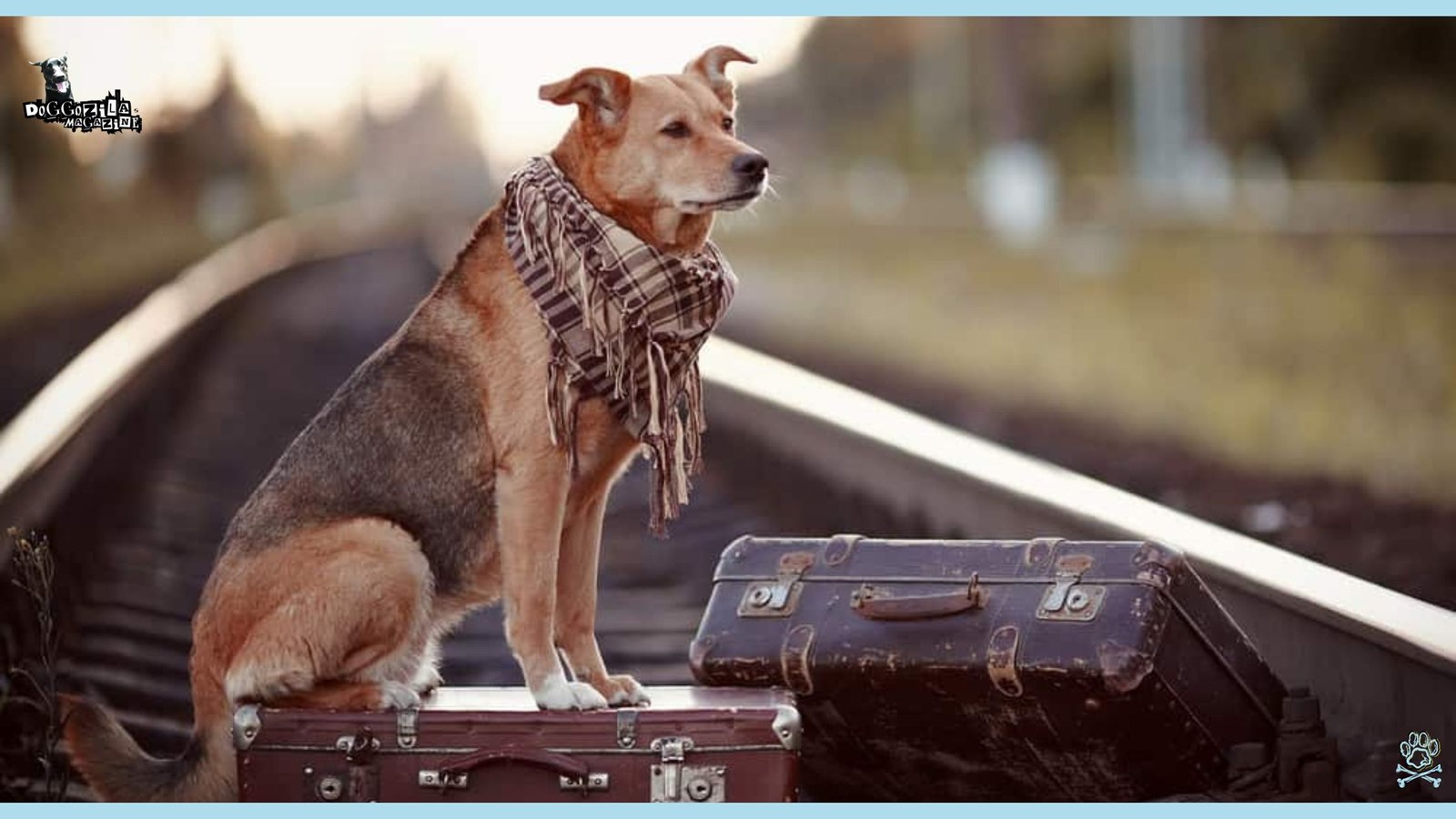
HOW TO TRAVEL WITH A DOG: EXPLORING OUTDOOR ADVENTURES SAFELY AND RESPONSIBLY
From scenic hikes to beach getaways, outdoor adventures with your dog create unforgettable bonding experiences, but they require special considerations for safety and enjoyment. Research pet policies thoroughly before visiting parks or beaches, as many have seasonal restrictions or leash requirements that could impact your plans. Pack essential gear like a sturdy harness, portable water bowl, and paw protection for rough terrain to keep your pup comfortable during activities.
Monitor weather conditions closely, as extreme heat or cold can pose serious health risks to dogs during outdoor excursions. Always have a backup plan in case trails are too challenging or areas are unexpectedly closed to pets. By preparing for various scenarios, you’ll ensure every outdoor adventure with your furry companion is both fun and safe.
Hiking And Backpacking with Your Dog: A Comprehensive Guide to Trail Success
Before hitting the trail, assess your dog’s fitness level and gradually increase difficulty to prevent injuries or exhaustion on longer hikes. Invest in proper gear like a breathable harness, collapsible water bowl, and dog backpack if they’ll carry their own supplies.
Research trail regulations beforehand – some national parks prohibit dogs entirely while others restrict them to certain areas or require leashes at all times.
Protect your dog’s paws with booties on rough terrain and check frequently for burrs, ticks, or cuts during breaks. Practice trail etiquette by yielding to other hikers, keeping your dog controlled, and packing out all waste to maintain access to pet-friendly trails.
Beach Trips and Water Safety for Dogs: Essential Tips for Fun in The Sun
Not all dogs are natural swimmers, so introduce water gradually and never force them into waves or deep areas if they seem hesitant. Bring a canine life jacket for boating or strong currents, even for confident swimmers, as fatigue can set in quickly.
Rinse saltwater and sand from your dog’s coat after swimming to prevent skin irritation and dry their ears thoroughly to avoid infections.
Provide constant access to fresh water and shade, as dogs can easily overheat while playing on hot sand under direct sunlight. Be aware of local regulations – some beaches have seasonal dog bans or require leashes during peak hours to protect wildlife and other visitors.
Camping Under the Stars with Your Pup: Creating A Comfortable Outdoor Experience
Choose a tent with adequate space for both you and your dog, considering their sleeping habits and need for movement during the night. Bring familiar bedding to help them settle in and consider a dog-specific sleeping pad for insulation from cold ground temperatures.
Secure all food in bear-proof containers or elevated storage to prevent wildlife encounters and never leave your dog unattended at the campsite.
Use glow-in-the-dark collars or clip-on lights for nighttime visibility and keep a long lead for safe exploration around camp. Follow campground rules regarding noise, leash requirements, and designated pet areas to ensure a positive experience for all campers.
🔑 Key Points: Prepare for Outdoor Adventures. Bring protective gear like booties for rough terrain and life jackets for water activities. Check leash laws and pet policies at parks, beaches, and campgrounds.
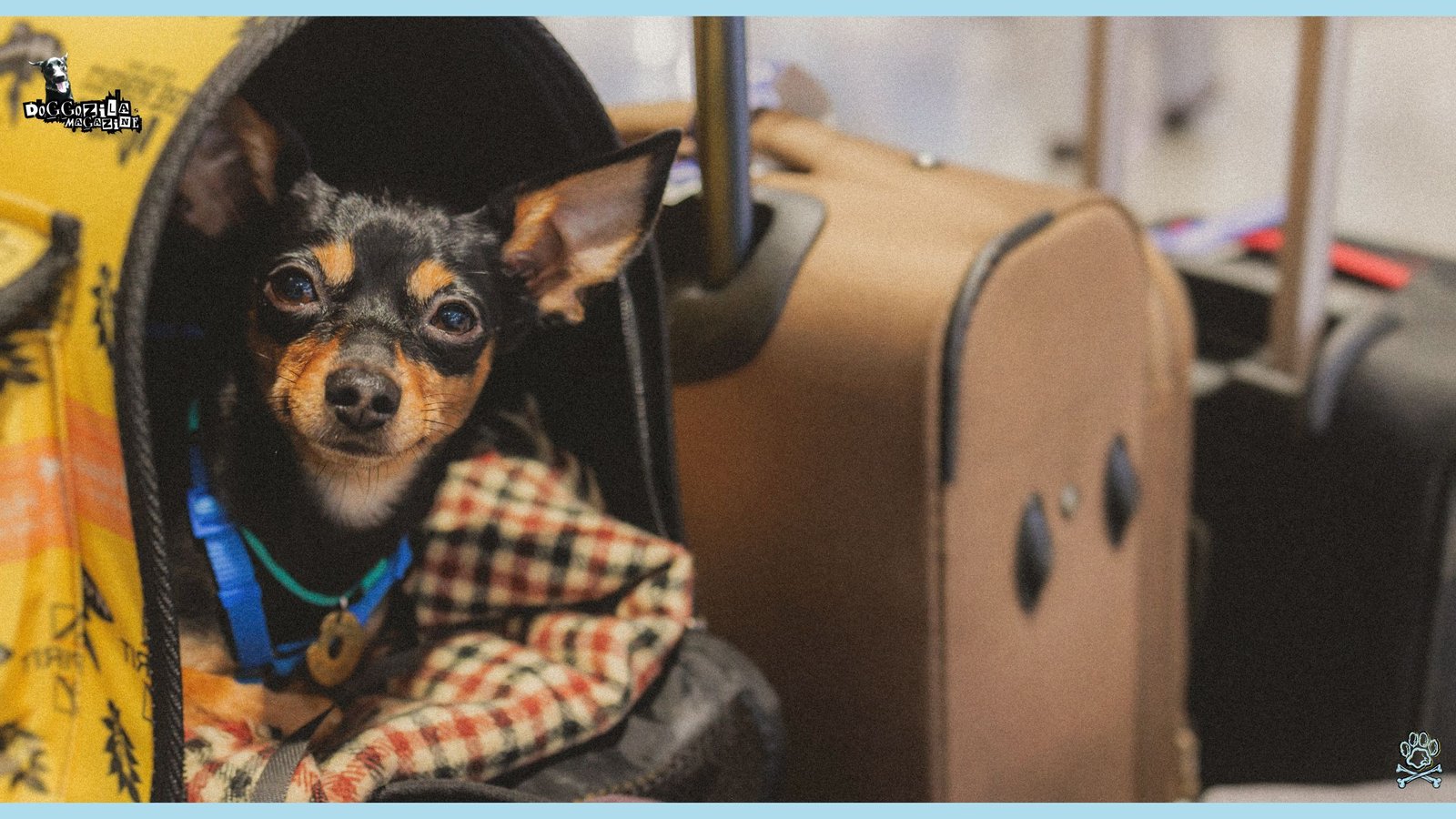
HOW TO TRAVEL WITH A DOG: HANDLING EMERGENCIES AND HEALTH CONCERNS ON THE ROAD
Even well-planned trips can encounter unexpected challenges, making emergency preparedness crucial for traveling pet owners. Research veterinary clinics along your route and at your destination, saving 24-hour emergency numbers in your phone before departure. Pack a comprehensive pet first-aid kit including gauze, antiseptic, tweezers, and any medications your dog regularly requires. Learn to recognize signs of distress like excessive panting, lethargy, or loss of appetite that may indicate illness or injury.
Document your dog’s medical history and vaccination records digitally and physically in case you need to visit an unfamiliar vet. By anticipating potential health issues, you’ll be equipped to handle emergencies calmly and effectively while traveling.
Recognizing Signs of Stress and Anxiety: Helping Your Dog Adjust to Travel
Dogs display stress differently – watch for subtle cues like excessive yawning, lip licking, or avoidance behaviors that may indicate discomfort. Create a safe space in your vehicle or lodging with familiar items that carry home scents to provide comfort in new environments.
Maintain routines for feeding and walks when possible, as predictability helps reduce travel-related anxiety in dogs. Consider natural calming aids like pheromone sprays or vet-approved supplements for dogs with severe travel stress. Be patient and allow adjustment time, as forcing interactions or activities can worsen anxiety in already overwhelmed pets.
Dealing With Motion Sickness and Digestive Upsets: Managing Travel-Related Illnesses
Start with short trips to acclimate your dog to motion if they experience car sickness, gradually increasing duration as tolerance improves. Feed a light meal several hours before travel and avoid giving treats or large amounts of water during transit to minimize nausea.
Ask your vet about prescription motion sickness medications or natural remedies like ginger for dogs with persistent travel sickness.
Pack cleaning supplies and spare bedding for accidents, remaining patient as most dogs outgrow motion issues with positive experiences. Monitor for diarrhea from dietary changes or stress, keeping bland food and probiotics on hand to settle sensitive stomachs during trips.
Handling Injuries and Finding Emergency Vets: Preparing for The Unexpected
Learn basic pet first aid techniques like wound cleaning, splinting, and CPR before traveling to remote areas where professional help may be distant. Program emergency vet contacts into your phone and research animal hospitals near your destination that offer 24/7 critical care services.
Carry your dog’s medical records including vaccination history and any chronic conditions in case emergency treatment is required.
Watch for signs of serious injury like limping, bleeding, or difficulty breathing that warrant immediate veterinary attention. Remain calm during emergencies – your composed demeanor will help keep your dog relaxed while you administer care or seek professional help.
🔑 Key Points: Handle Emergencies Like a Pro. Locate nearby 24-hour vet clinics before your trip. Pack a pet first-aid kit and learn basic emergency care (wound cleaning, CPR).
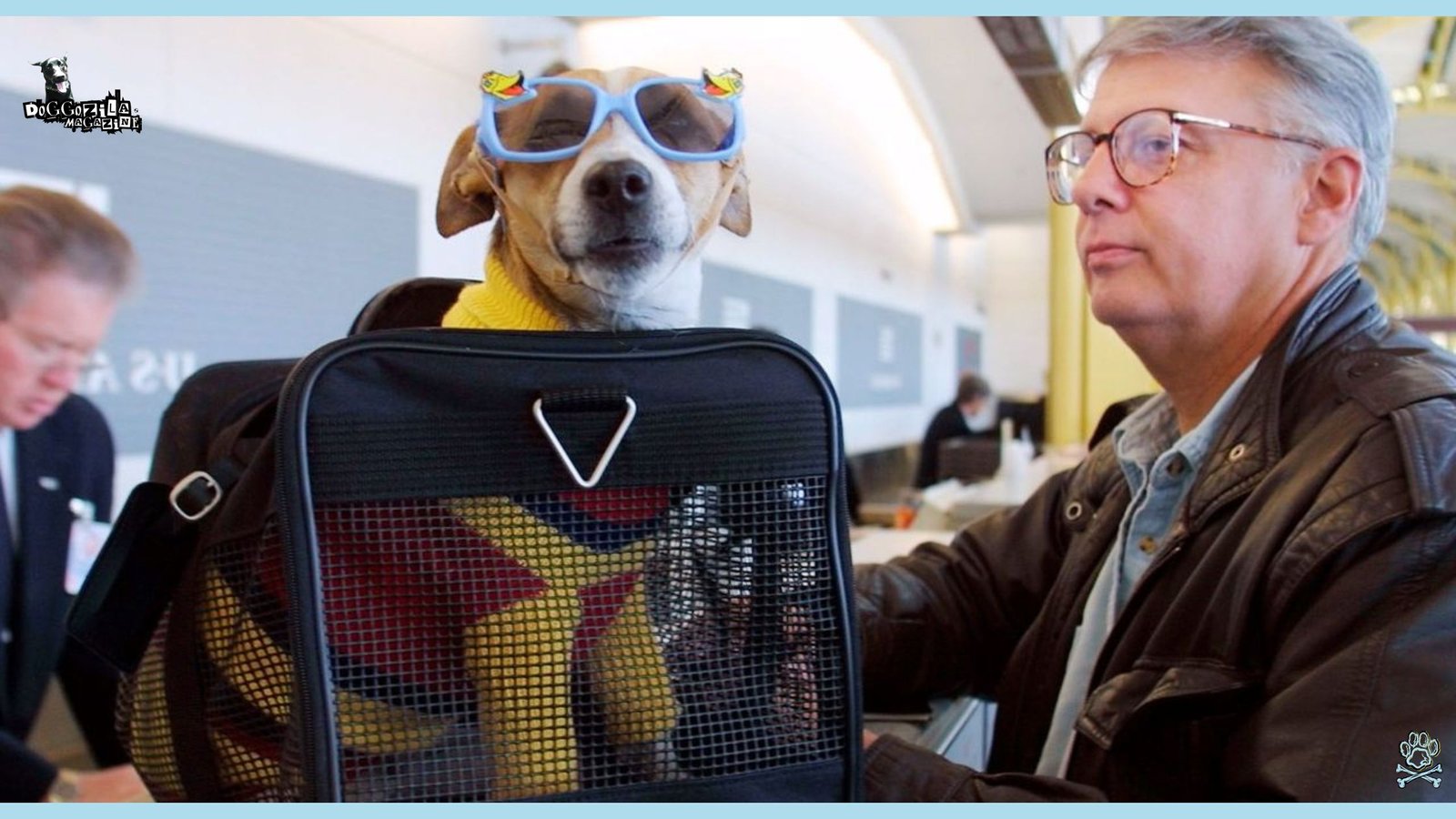
INTERNATIONAL TRAVEL: HOW TO TRAVEL WITH A DOG ABROAD WITHOUT COMPLICATIONS
Taking your dog overseas requires meticulous planning and documentation to comply with varying international pet import regulations. Begin preparations months in advance, as some countries require blood tests or quarantine periods that take significant time to complete. Research breed-specific restrictions, as some destinations ban certain types of dogs entirely regardless of individual temperament. Consider hiring a pet relocation service if navigating complex international requirements seems overwhelming for your first overseas trip with your dog.
Keep digital and physical copies of all documents in multiple locations in case originals are lost during travel. With thorough preparation, international travel with your dog can be a smooth and rewarding experience.
Researching Country-Specific Pet Entry Requirements: Navigating Global Regulations
Each country maintains unique pet import policies that may include mandatory microchipping, specific vaccinations, or waiting periods after blood tests. The European Union requires a pet passport and rabies titer test performed at approved laboratories at least 30 days before travel.
Tropical destinations like Hawaii and Australia have strict quarantine rules designed to protect local ecosystems from foreign diseases.
Verify whether your airline has additional requirements beyond the destination country’s regulations to avoid last-minute complications. Consult official government websites or embassy contacts for the most current information, as pet policies can change frequently.
Pre-Flight Health Checks and Documentation: Ensuring All Requirements Are Met
Schedule a USDA-accredited veterinary appointment within the required time-frame (typically 10 days) before international travel for health certificates. Ensure your dog’s microchip is ISO-compliant (15-digit) and can be read by international scanners before departure.
Obtain all necessary endorsements for paperwork, as some countries require USDA or embassy certification of veterinary documents.
Research airline-specific crate requirements for international travel, as these often differ from domestic flight regulations. Keep all documents organized in a waterproof folder and consider carrying notarized copies in case originals are lost or damaged during your journey.
Adjusting To New Time Zones and Climates: Helping Your Dog Settle in Abroad
Gradually adjust feeding and walking schedules before departure to minimize jet lag effects on your dog’s routine. Research local veterinary practices and emergency clinics near your accommodation before arriving in a new country.
Allow several days for acclimation to significant climate changes, providing temperature-appropriate gear like cooling vests or insulated coats as needed.
Be mindful of local wildlife and plants that may pose dangers not present in your home environment. Maintain familiar routines with your dog while introducing them gradually to new sights, sounds, and experiences in their temporary home.
🔑 Key Points: Document the Journey & Make Lasting Memories. Capture photos and videos of your adventures together. Create a travel journal or scrapbook to cherish the moments forever.
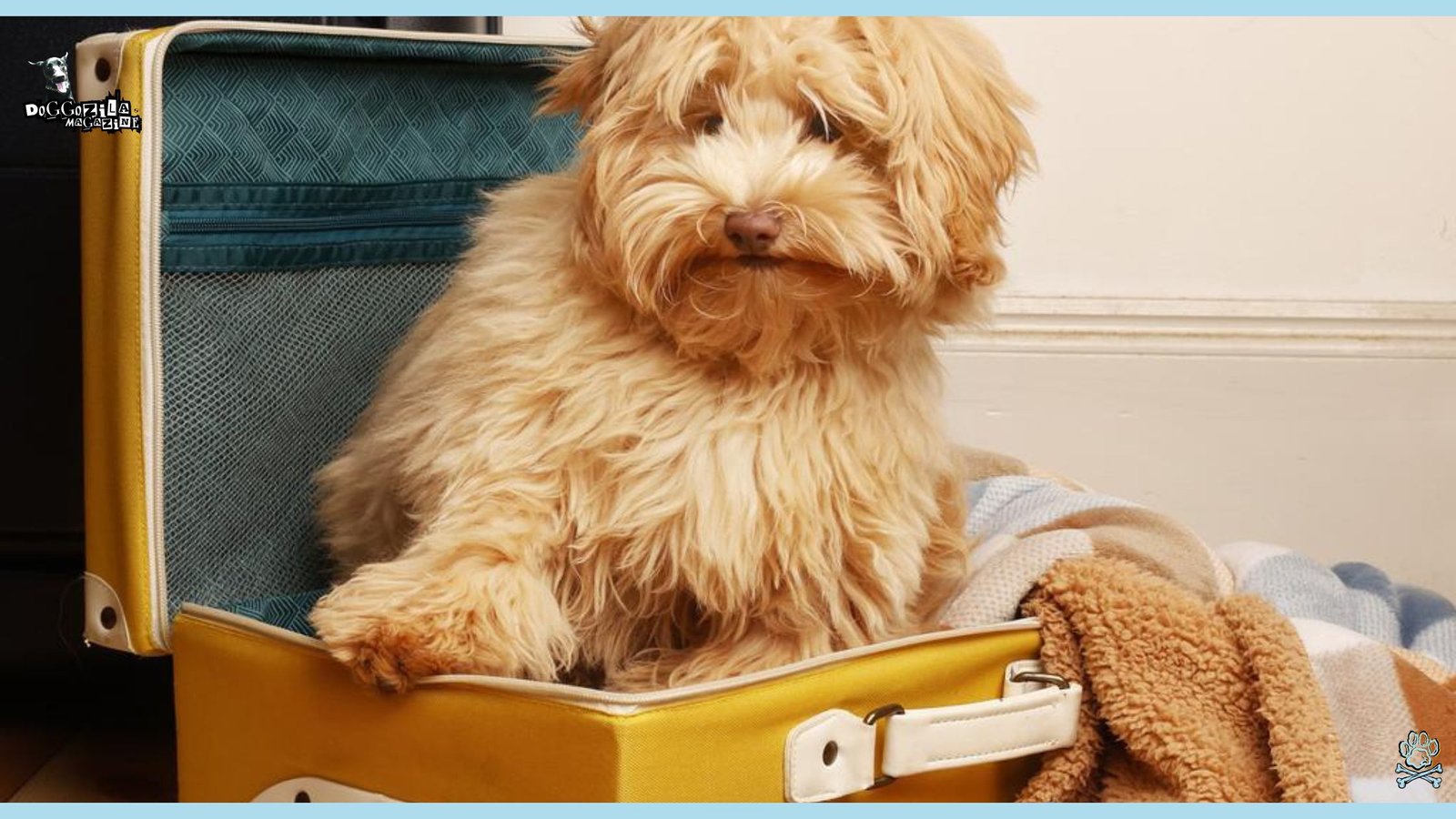
HOW TO MAKE FUN MEMORIES: CAPTURING THE PERFECT MOMENTS WHEN TRAVEL WITH A DOG AND CHERISH FOREVER
Traveling with your dog creates priceless memories worth documenting through photos, videos, and keepsakes from your adventures together. Create a dedicated travel journal noting funny moments, favorite spots, and personal growth you’ve observed in your dog during trips. Collect small mementos like tags from pet-friendly locations or pressed flowers from special hikes to commemorate your journeys.
Teach your dog to pose for pictures at scenic overlooks by associating camera sounds with treats and praise. These tangible reminders will bring joy for years to come and inspire future adventures with your canine companion.
Photography Tips for Adventurous Dog Pics: Capturing Your Dog’s Personality
Use natural light during golden hour (early morning or late afternoon) for flattering outdoor photos that highlight your dog’s features. Get down to your dog’s eye level for engaging perspectives that create intimate, memorable images.
Bring high-value treats or favorite toys to capture attention and natural expressions during photo sessions. Experiment with action shots during play or hikes to showcase your dog’s energy and joy in new environments. Edit photos lightly to enhance colors while keeping the images authentic to your travel experiences together.
Creating A Travel Scrapbook or Social Media Series: Sharing Your Adventures
Compile tickets, maps, and photos in a physical scrapbook with handwritten notes about special moments from each trip. Start a dedicated Instagram account or blog to document your travels, using hashtags to connect with other pet travelers.
Include your dog’s perspective in captions or journal entries for a fun, personal touch that friends and followers will love. Print favorite photos in a travel-themed photo book as a lasting keepsake of your adventures. Share both the highlights and humorous challenges to present an authentic portrayal of traveling with a dog.
Planning Your Next Trip Together: Building on Your Travel Experiences
Reflect on what worked well and what you’d change from previous trips to improve future adventures with your dog. Research new types of pet-friendly vacations like dog-friendly cruises or ski resorts that offer unique experiences.
Gradually increase trip complexity as your dog becomes more comfortable with travel, building confidence through positive experiences.
Connect with other traveling pet owners for destination recommendations and tips tailored to your dog’s personality and interests. Each journey strengthens your bond and creates anticipation for the next adventure you’ll share together.
Final Thoughts: Embracing The Epic Adventures of How to Travel with Your Dog
While traveling with a dog requires additional preparation and flexibility, the rewards of shared adventures far outweigh the challenges. Each trip builds your dog’s confidence and deepens your mutual trust through new experiences and problem-solving together.
Remember that some of the best travel moments come from unplanned detours and the simple joy of exploring with your loyal companion. As you gain experience, you’ll develop a travel rhythm that works perfectly for you and your dog’s unique partnership.
The world becomes richer when seen through your dog’s eyes – so pack those bags, secure the leash, and embark on your next unforgettable journey together.

🐾

